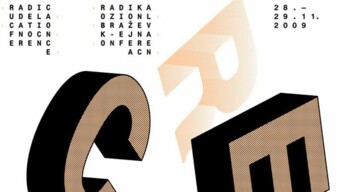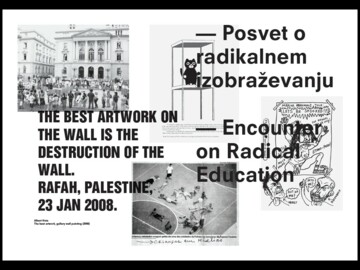The biotope of contemporary art, by Zdenka Badovinac
At the Moderna galerija, we have asked ourselves what it is that constituencies actually constitute. Seeing that we work within a very small community – Ljubljana only has a population of 300,000 – it is virtually impossible to think about the institution other than in relation to other agents in the community, which I here refer to as the space of contemporary art in the narrow sense of the term. We think about our community in terms of a biotope of sorts, in which every species, every agent, regardless of their status, is important for the survival of the community. For this reason, it is important to think about the institution both as just one of many constituencies, and as a space co-created by others. Here I shall focus on cases that speak of the Moderna galerija as one of the constituencies of the community of contemporary art.
In the early 1990s, just after the breakup of Yugoslavia and the declaration of the independent state of Slovenia, there was a strong desire shared by the representatives of our cultural space to see contemporary art have a central position in the new state. Official cultural strategies to help us achieve that were non-existent, so we learned from artists who had already developed self-organised forms of cultural production through collective work in the 1980s. A particularly useful example of this for the Moderna galerija was the collective Neue Slowenische Kunst. Thus we cooperated with the group IRWIN in 1994 on a project for Sarajevo: our aim was to make a contribution toward better conditions for cultural production after the end of the war, so we proposed a collection for the future Sarajevo museum of contemporary art. The absence of important collections and the general undernourishment of infrastructure for culture was a problem faced not only by Sarajevo but ourselves, too, although to a lesser extent. This led us to establish a collection of Eastern European art in Ljubljana in 2000, to help consolidate and empower the space of contemporary art. In spaces where contemporary art is marginalised, where there is no art market, and the social status of artists is still largely left up to the discretion of the state, the debate about the status of artists is at least different, if not more frequent, than in those spaces ruled by the market. In their struggle for better conditions, artists and intellectuals often seek → alliances with other socially subordinate groups or become actively involved in actions like the general popular uprising in Slovenia in 2012, which was directed against extreme right-wing politics. What is more permanent in character are the joint endeavours for a space of contemporary art, which in Eastern Europe continues to symbolise a space of free thinking and alternative alliances. The various agents on the scene of contemporary art are constantly brought together by the underdeveloped infrastructure and insufficient resources, due in part to the political priorities centring on the national language and traditional culture. In Ljubljana, this → common [→ common] interest has united – quite remarkably, in my view – large institutions, artist-run spaces, and smaller NGO spaces. Let me illustrate this with a few specific examples.
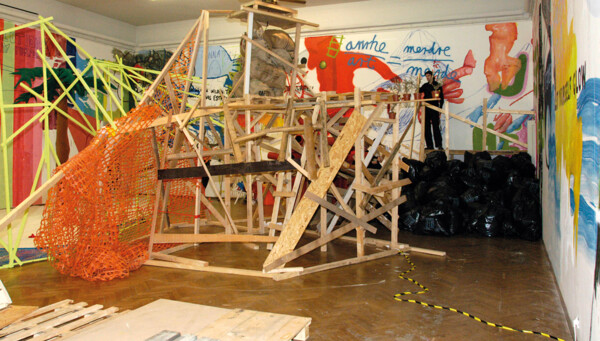
Figure 1: Jeder Mensch ist ein Kurator (Every Man is a Curator), exhibition catalogue designed by Ajdin Bašić in his contribution to the exhibition.
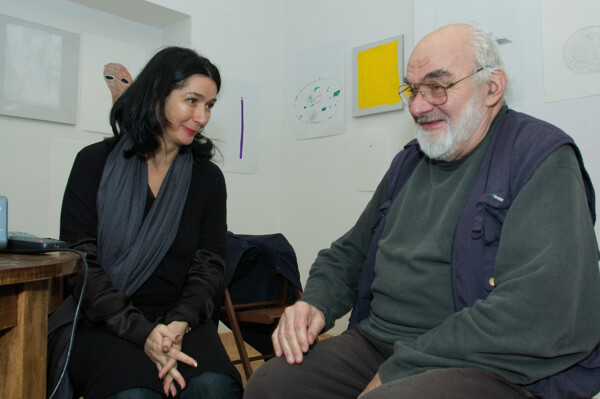
Figure 2: Old Masters, exhibition view at P74 Gallery, a part of Hosting Moderna galerija project. Curated by Zdenka Badovinac. Photo: Dejan Habicht, Moderna galerija/Archive.
In 2008, when Slovenia had a right-wing government with fairly extremist views, we started the renovation of the Moderna galerija building. The then minister of culture deliberately allotted us only the funds needed for renovation works, but not for the programme. We thus decided to carry out a project without any money, and offered our museum premises, already empty by that time, to anyone who wished to exhibit there under their own organisation and at their own expense. (Figure 1) Not only artists responded to our invitation, but also a variety of other agents in our locality, which saw this self-organised exhibition as an opportunity to call attention to issues relevant in their fields. Another project that occurred in the period the Moderna galerija was without funding for its programme was Hosting Moderna galerija!. Over 20, and for the most part small NGO spaces across Slovenia housed and at least partly co-financed our projects out of → solidarity [→ solidarity, → solidarity]. (Figure 2)
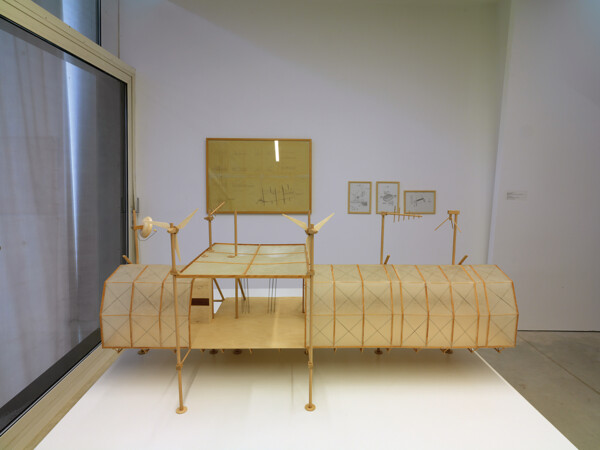
Figure 3: Marko Peljhan, Ladomir-Faktura, 1994. Photo: Dejan Habicht, Moderna galerija/Archive.
Some of the key artists we have collaborated with in building a strong platform for contemporary art over these last two and a half decades have long been working in the framework of organisations defined as associations or institutes in Slovenia, which are financed with public funds, like our museum. For the most part, these organisations have their premises, such as galleries or offices, receive three or four year’s funding at a time, and focus their activities not just on the work of the artist or art group that started the organisation, but also on projects by other artists’ and researchers’, on producing publications, and so on. A few examples are the spaces run by the artists Tadej Pogačar (P74), Dragan Živadinov (Delak Institute), Marko Peljhan (Projekt Atol Institute), Vadim Fishkin and Mateja Bučar (DUM Association of Artists), Janez Janša (Maska), Janez Janša (Aksioma), and Marija Mojca Pungerčar (KUD Trivia). Some of these artists opted for this form of organised work because their production calls for the cooperation of a variety of agents to fulfil complex technical and organisational conditions. Our exhibition Stopover 1:1 aimed to highlight the fact that the nature of art changes with the conditions of work, not only that art co-creates the conditions. We did this by presenting a number of projects that are essentially durational in nature, such as Marko Peljhan’s Makrolab, 1994— (Figure 3), the NSK State in Time, 1992—, Salon de Fleurus, 1993—, and KSEVT by Dragan Živadinov, Dunja Zupančič and Miha Turšič, 2010—. These are on-going artistic projects that the artists must maintain, which also means, at least in our country, a need to secure public funding. If we understand these and similar projects as artworks, it is necessary to consider a more suitable relation between art and the institution, one more in keeping with their durational nature and organisational structure. In cases like these, an institution can only represent a section of the duration of such an artwork, and never its entire life, which happens in real time and in direct social interaction. Art and the institution keep bumping against the same conditions of cultural production in a similar fashion, and the institution’s place is no longer in being a protector or representative of art. Rather, something that could be defined as partnership is developing between the two. When an institution stops being a representative of art and becomes its partner, it is time to consider the continued relevance of the question of who constitutes a specific institution’s constituency. In view of the above it follows that, rather than speaking of the constituencies of an institution, it might make more sense to speak of the institution as merely one of the constituencies that co-create a specific space of contemporary art.
Radical Education, by Bojana Piškur
Radical Education (RE) was initiated in 2006 as a project within a public art institution – Moderna galerija Ljubljana – in order for it, through analysis of its own work, to direct itself towards a different level of relation with this institution and others like it. One of the first actions, when the idea of RE was actually conceived, was the occupation of → Rog bicycle factory in Ljubljana, in 2006. Rog opened up important questions of → common [→ common] spaces in the city, access and usage of these spaces, the politicisation of public spaces, and the question of how to connect with other, not necessarily “similar” institutions. In RE, from the very beginning, the ways of opening the museum to various “→ agents” were deliberated, bringing different practices from the “outside” into the very context of an art institution, as well as creating common micro-political situations through different → alliances and collective actions. However, RE was at the same time also a rather heterogeneous group of people (anthropologists, sociologists, anarchists, artists, pedagogues, migrant workers, curators) with different experiences of working in communities (of → migrant workers, asylum seekers, the erased of Slovenia, with the Zapatistas in Chiapas, the Piqueteros in Argentina, with the HIJOS in Guatemala, and so on), and institutions (university, art museum), and thus as a consequence of this very different, and sometimes rather conflictual, ideas arose as to what kind of space a museum actually is.
RE was formed in a time when the alter-globalist movements (post-Seattle, post-Geneva) were already exhausted to a certain degree, and when intensive deliberations on how to proceed began. For example, the questions that arose were: Is it possible to be in some kind of alliance with the institutions, such as, for example, universities and museums? What are the products of such encounters? How do we build institutions of counter-power? What are the new “monster-institutions” like, politically speaking? Is there a possibility for a common struggle against capitalism and exploitation, and if so in which ways?
RE tried from the very beginning to connect two institutions: the museum – Moderna galerija and the movement – Social Centre Rog (SC Rog). The aim was to overcome the dichotomy between institutions and movements and to reflect on the openings that this conflictual relation provides. The starting point was the idea that RE was not and did not want to be “just another” participative project within the museum, because temporary → solidarities [→ solidarity, → solidarity] of this kind (for example, limited work with different “marginal” groups, namely, the so-called “projections of politics as something else and outside”) only divert from the politics of the here and now. We were, in fact, dealing with a process that was primarily based on trust, having in mind that rather “→ fragile” political subjectivities were most often involved in this.
It is important to emphasise that the RE position was not only to formulate a meaningful and relevant set of questions but, above all, to confront these questions in collective situations, to democratise expert knowledge and produce common knowledge instead. Here common knowledge was understood as theoretical thinking accompanied by politically active attitudes; something that joins different positions in a new anti-hegemonic cultural front. As is generally known, a series of problems always arise in such contexts, like that with “→ translation”, the problem of highly abstract language usage and so on. Subsequently, there is also a danger of falling into a trap of intellectual arrogance.
With all these considerations in mind, a series of seminars were organised jointly with the SC Rog and Moderna galerija. One of the themes was “Resistance as Creation”, which was organised with the invisible workers of the world, asylum seekers, activists, cultural workers, artists, and militant researchers[1], and in which there were discussions about the relationships among social centres, artists and political collectives, ways of communication and cooperation with the local community, questions of usage of public and common spaces in the city, and so on. The idea was not only to “learn from” institutions, but also to pass on such knowledge to movements and collectives; to invent new conceptual, expressive and organisational tools in order to empower those who say “we will not be governed this way”.
One of the aims of RE was also to define common investigations between the two fields i.e. art and politics, and to ascertain, through defining concepts such as → labour, aesthetic experience, affects, precarious work, cognitive work, common good, class antagonism, → emancipation, artistic → autonomy, and the like, what it is that art forms and forms of political resistance have in common. In this way, some new institutional forms of resistance could be found, in which resistance would be considered a common space of encounter, or even some kind of new “aesthetics” as Paolo Virno said.[2] For example, one question that we found very important was: What is creation? Not only from the perspective of artwork, but also from the point of the production process being an aesthetic experience itself. Is manual labour as such an aesthetic experience? What about art, which repeats labour? Is this experience limited only to the art space or can it spread everywhere? Is it a collective creation by an artist becoming a collective worker, or a representation made by an individual? How does art function as a tool of political emancipation?
But the important thing in all these seminars, debates, exhibitions and research projects by RE was that they were also based on a re-examination of one’s own position and critical analysis of one’s own work in relation to the collective and to the institution. If someone today posed the question how to understand RE in relation to Moderna galerija, the answer would probably be that RE was in fact “a series of failures”. This is certainly not meant in a negative way – which is a small paradox – but quite the opposite. This process, project, methodology, a collective or a “constituency” called Radical Education, was never realised in a way for it to become the brand of an institution. It never quite lived up to the expectations of what a project, seminar or exhibition should achieve and in what way, because with RE there always existed a space for the unpredictable, an unknown domain of arts and politics. In 2014 RE came to the point where this kind of → intervention in the space of an art institution became unnecessary. Certainly not unnecessary in the sense that the museum became an ideal institution, but in that the ideas of RE had in a way become embedded in debates on “→ other institutionality” within the museum itself.
We have learned from RE that what art and social movements have in common is not about content, such as the view of art on social resistance. It is also not the case that a site of artistic transformation can also be assumed to be a site of political transformation. What was relevant in the particular relationship between the art institution and RE was the question of how to link political and artistic imagination with the production of new institutions in a similar way to what Deleuze once said (but having in mind theory): A museum is exactly like a box of tools. It (…) must be useful. It must function. And not for itself. If no one uses it, (...) then a museum is worthless or the moment is inappropriate.[3] I’d like to think of RE as one of the tools in the museum.
Current potentials, by Adela Železnik
In the final part, I will briefly present some of the more recent relationships that the Moderna galerija developed, being conditioned also by the new venue that we opened in 2011, the Museum of Contemporary Art Metelkova. One of these relationships is a new type of → collaboration within the museum, with a group formerly known as Neteorit, and the the → network of institutions, organisations and agents in our neighbourhood.
Neteorit was a self-organised programme of lectures, talks and debates related to art, theory and politics. It was conceived by a group of artists, philosophers and activists as a response to the local context that proved insufficient in terms of providing adequate infrastructural support for this sort of action. Neteorit was an attempt to connect the previously dispersed and separated activities of this group and join efforts to provide spaces for work and changing ideas, as well as to gain a certain feedback, strength and visibility. Neteorit was organised informally, and although the programme was more or less → autonomous in relation to the Moderna galerija we supported it by offering museum spaces and some facilities free of charge. We also recognised Neteorit as our constituency group, which thus took part in the L’Internationale “Negotiating Institutions” seminar, the second Useful Art Education Seminar of the Uses of Art Project, which took place at the Tate Liverpool in December 2014.
Neteorit’s reading seminars, the aim of which was also to → intervene into the conditions of knowledge production on the structural level, lasted from 2013 until 2015. Last year the Neteorit group re-formed itself into a new, ŠUM collective, concentrating on regularly publishing a journal for contemporary art criticism and theory called Šum, and organising seminars and other activities in some other contemporary art spaces.
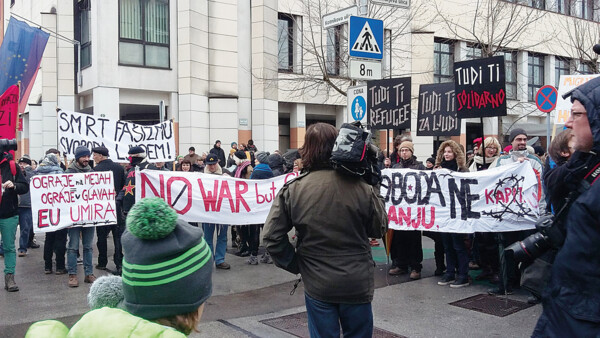
Figure 4: Antifascist protest Refugees Welcome in protection of asylum-seekers at Kotnikova in Ljubljana, 27 February 2016. Photo by Adela Železnik.
The second example is our relationship with the neighbourhood of the Museum of Contemporary Art Metelkova, a residential part of Ljubljana called Tabor, which is more fluid, consisting of various small-scale → alliances such as FORUM, the programme of national institutions within the museums quarter (the National Museum, Slovene Ethnographic Museum, Slovene Cinematheque and ourselves), or our alliance with the Home for Elderly People and local associations in cultivating green spaces. In 2012, together with the non-profit organisation Bunker and other agents in the area (schools, galleries, organisations), we formed an association called Cultural District Tabor, with the aim of identifying our common interests, to → collaborate more intensely and to react to some urgent issues. Such an urgency occurred last week[4] when the state authorities accommodated a group of asylum seekers in a temporary asylum home within Tabor. The Cultural District Tabor thus organised a protective shield against conservative incitements and threats. (Figure 4)
Over the last year, when there has been a marked increase in the number of people opting for the Balkan route, e.g. from Syria via Turkey, Greece, Macedonia, Serbia, Croatia, to Slovenia, and from there onward to Austria, Germany or Sweden, many cultural institutions as well as individuals kept asking themselves how to act. One of the immediate answers would be to fight against racial prejudice and point out the potential to change our collective consciousness. Therefore, in September 2015 the Moderna galerija organised a panel discussion within the framework of the Glossary of Common Knowledge seminar on → geopolitics. In the panel at the Museum of Contemporary Art Metelkova the participating theorists, artists and activists presented their views on the refugee crisis in Europe primarily from the Balkan perspective, recognised the existing initiatives, and reflected on the possibilities of building a → common [→ common] → solidarity [→ solidarity, → solidarity] → network.
As the result of a more and more restrictive EU → migrant policy, the number of asylum seekers in Slovenia increased, and they are now accommodated in various asylums around the country, one of them, for the first time located in Ljubljana city centre instead of the periphery, is placed in our neighbourhood. This has made all the agents in the area re-think their positions and move towards concrete actions.
As the Moderna galerija once joined forces with activists when bringing children from the degraded outskirts of Ljubljana, an area called Rakova Jelša, mostly inhabited by migrants from Bosnia, on a boat to the city centre (→ SC Rog), we now keep collaborating with the Protirasistična fronta brez meja (Antiracist Front Without Borders) network of activists to find ways to overcome the fear and barriers in mind to open up a common space for all.


